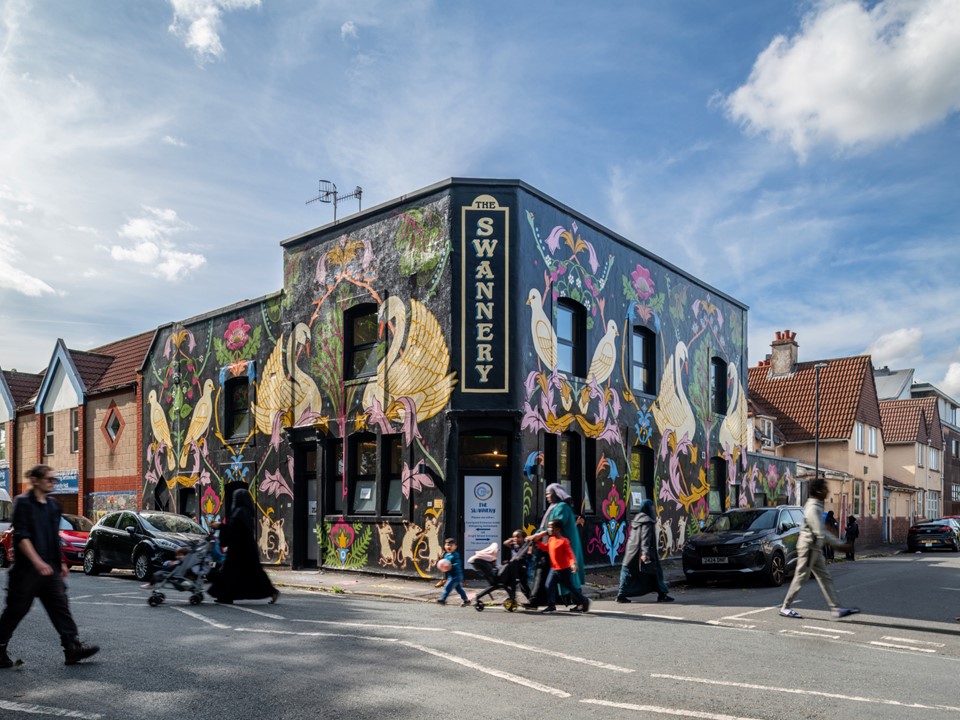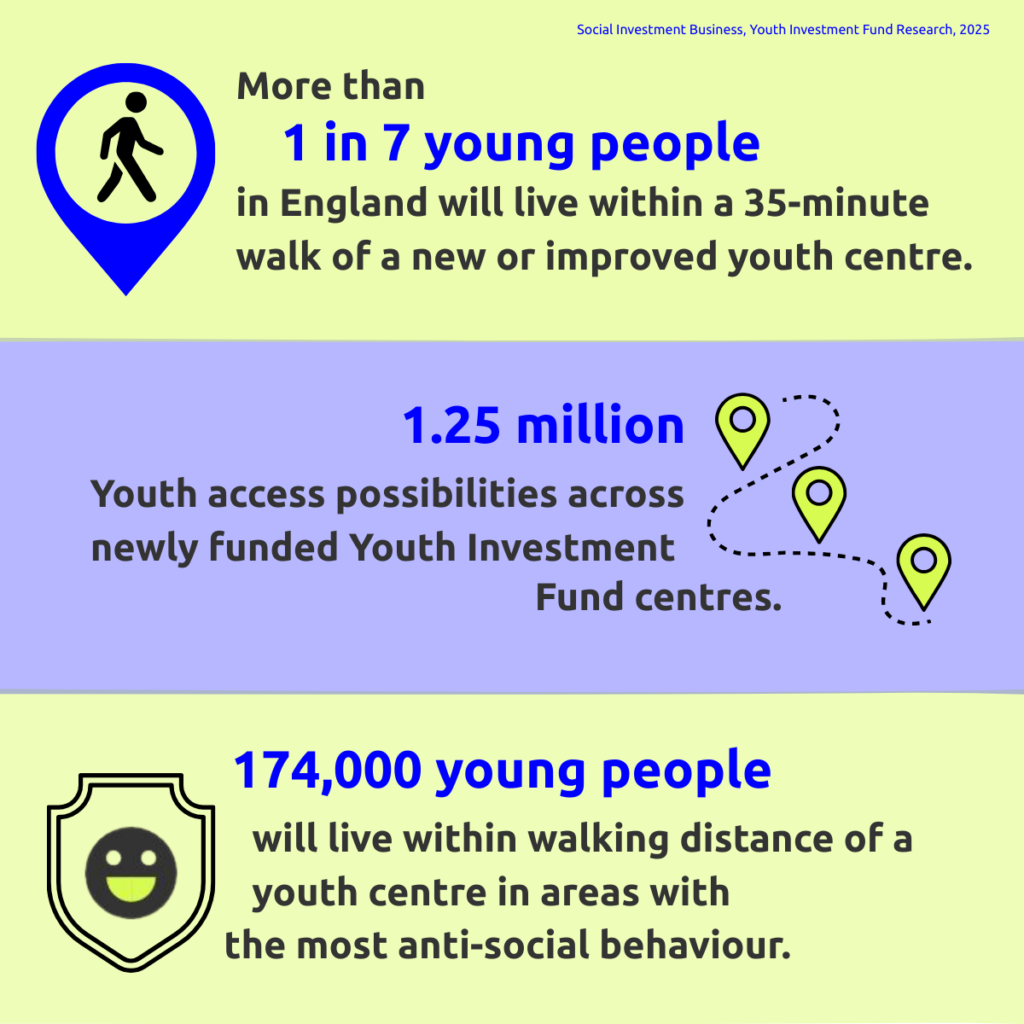
More than 1 in 7 young people live within a 35-minute walk of a newly funded youth centre
Research from Social Investment Business shows that youth centres funded by the £300M Youth Investment Fund will enable over 1 in 7 young people in England to access a new or renovated youth centre within a 35-minute walk of where they live.

The Youth Investment Fund aims to provide more equal access to high-quality youth centres in England in areas where youth need was high, and provision was low. It is the largest investment in the youth estate in England for more than half a century to invest in young people by building or renovating youth services in the most deprived areas of the country.
When the Fund completes, there will be over 270 new or refurbished youth centres and it will have enabled more young people to have a safe place to go, to make friends, and to have new opportunities that spark their ambition.
Geospatial analysis of youth accessibility to youth centres
Social Investment Business carried out a Geospatial Analysis of youth accessibility to youth centres funded through the Youth Investment Fund. The team already knew that around 70% of young people accessing the new facilities were within walking distance, but they wanted a deeper understanding of the fund’s impact. They also examined the socio-economic characteristics, particularly household deprivation and anti-social behaviour of the areas within walking distance of a newly funded youth centre.
The research was carried out using Diagonal’s Geospatial Analysis Engine that uses Open Street Map data (OSM), an open-source, in-memory engine built for analysing large datasets of the built environment. The team also used in-house data collected from delivering the Youth Investment Fund, Ward data (2021) and Age Data and Disability Age Data from the UK Census (2021). The research team then mapped Youth Investment Fund youth centres onto this data by matching them to a building or creating a point feature where they are located.
Social Investment Business research findings
Walking Distance Findings
- More than 1 in 7 young people (846,000 young people) across England will live within 35 minutes walking distance of a new youth facility.
- There will be a total of 1.25 million youth access possibilities across Youth Investment Fund youth centres. This figure includes young people being able to access multiple sites within a radius of 35 minutes’ walking distance.
- The highest numbers of young people in walking distance of a Youth Investment Fund youth centre are: North East England 29%, North West 26%, Yorkshire and Humberside 19%, and East Midlands 18%.

Anti-Social Behaviour Findings
- 174,000 young people live within walking distance of a youth centre in areas of the country with the most anti-social behaviour.
- 52% of all wards served by these facilities are in the top 30% of areas with the highest rates of anti-social behaviour.
- Wards within walking distance of YIF-funded facilities tend to be in areas with higher rates of anti-social behavior.
- Youth Investment Fund sites can help address UK Government targets to provide youth facilities in areas of high deprivation and crime.

Creating facilities in places with no existing youth centre
The Youth Investment Fund has invested in young people by building or renovating youth services in the most deprived areas of the country, with 70% in IMD 1-3 areas.
Many of the new youth centres are in parts of the country with little or no existing youth centre. Before Shotton Colliery Parish Council received a Youth Investment Fund grant of £1.2M, there was no existing youth facility in Shotton Colliery, County Durham. Having a brand-new dedicated youth space will give young people new opportunities make friends and gain valuable skills for life and work.
Similarly, in a deprived inner-city area of Lawrence Hill and Barton Hill in Bristol, young people only had access to outreach youth work but no dedicated youth space. A Youth Investment Fund grant of £ 796,647.00 to the Wellspring Settlement has created a new and safe youth space that young people can identify with.

Chris Davy Research & Design Manager for Social Investment Business said:
“It’s often difficult to truly map the impact of local provision and services, with common approaches relying on simple population metrics or a bird’s-eye view of a map.”
“By using a bespoke methodology that incorporates walking routes and the walking speed of young people, we’ve been able to build a much more accurate and powerful picture of the real-world impact of the Youth Investment Fund.”
“Mapping accessibility alongside socio-economic factors allows us to see not just where youth centres are located, but who they could potentially reach. This helps us answer the critical question of whether these facilities are in the right places with the data showing that they are. These centres are in areas with high deprivation and elevated levels of anti-social behaviour, where they can make the biggest difference.”
The research findings have enabled the Youth Investment Fund team to measure the impact of the fund, and in which areas young people can access the sites. The data will be invaluable to improve future impact measurement and targeted funding in areas of high deprivation and crime. Social Investment Business are continuing their research to map more youth centres across the country and the associated factors influencing youth provision.

